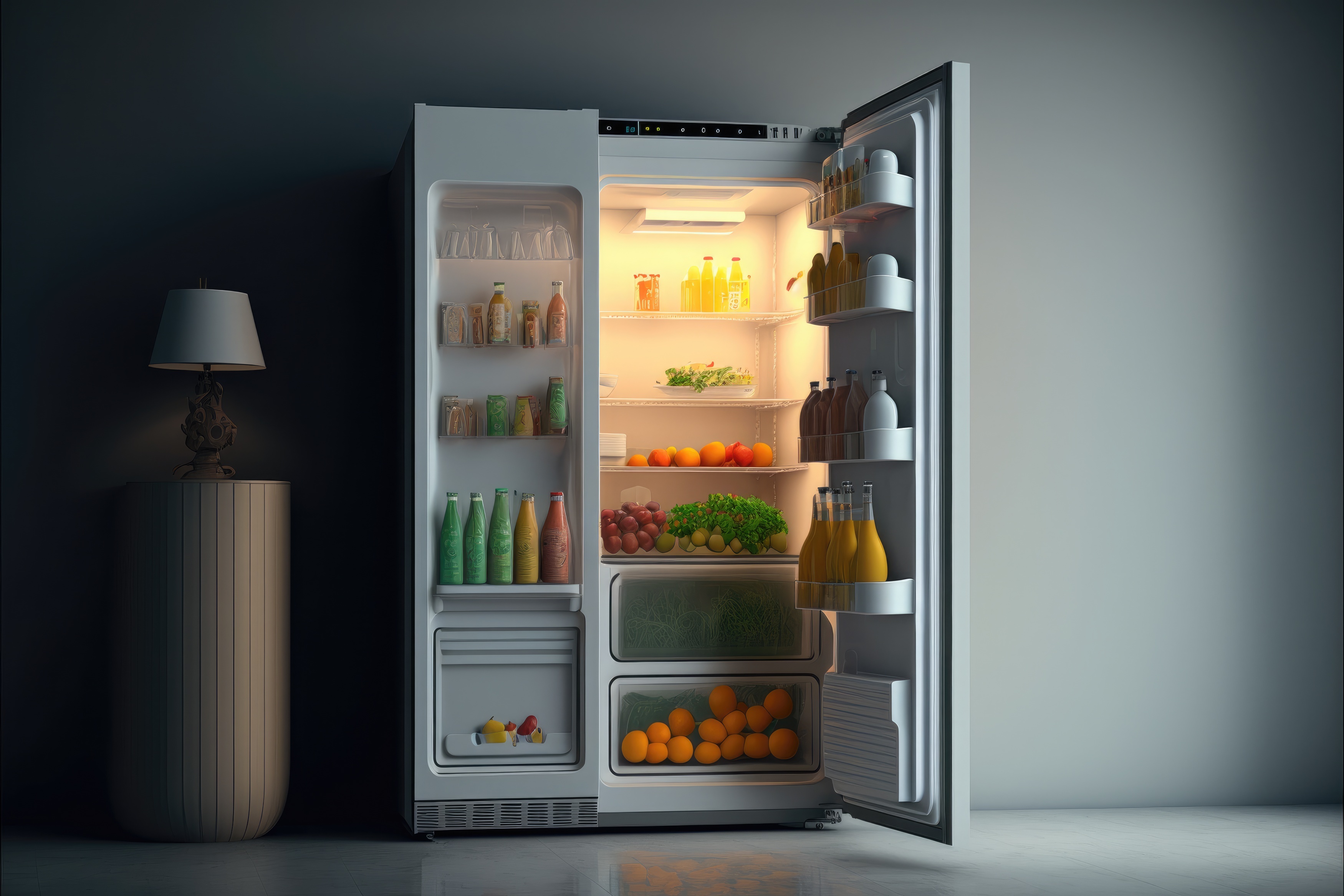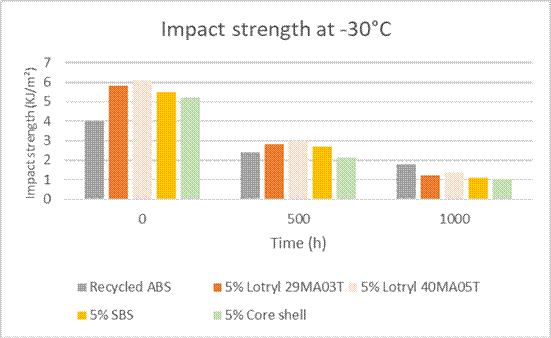
Recycled resins containing butadiene, such as rABS, rHIPS often have properties inferior to their virgin versions. It becomes necessary to use additives to meet the mechanical and aesthetics requirements of the users. SKFP has developed a range of LOTRYL® non-reactive resins to improve recycled resins properties. In this study, the aging of rABS has been compared when using the following types of additives including:
- Core shell with butadiene core
- Styrene/butadiene/Styrene block copolymers (SBS)
- LOTRYL® ethylene-methyl acrylate (EMA) copolymers with 29% and 40% methyl acrylate content
The rABS compounds, containing 5 weight % of additives, have been submitted to a temperature of 90°C for durations up to 1000hrs.
Before aging, the formulations with the highest impact performance were the ones containing the EMA copolymers. The LOTRYL® 40MA05T shows the best performance at room temperature and at -30°C. This material, containing an ultra-high content of methyl acrylate, is indeed quite compatible with styrenics resins and highly flexible. This compatibility and flexibility explain the high efficiency to improve the toughness of rABS.
As shown in the graphs below, after 1000hrs of aging, both EMA copolymers retained the highest impact resistance, even if aging had a negative effect on this property. This may be explained because EMA chemistry is extremely resistant to temperature aging. Therefore while the temperature degrades the butadiene of the rABS, the EMA modifier is unaffected and can maintain most of its impact modification performance. Other impact modifiers, such as SBS or butadiene-based core shells, can be degraded by high temperature due to the presence of butadiene in both products. Both lose
According to Nico Esselin, Market Development manager, : “While a small amount of EMA additive has been integrated (5w%), the rABS impact resistance after 1000hrs exposure remains above its initial resistance without modifier. These experiments show the good performance of EMA modifiers even after aging at high temperatures.”


Typical characteristics of LOTRYL® 29MA03T & 40MA05T
| Characteristics | Lotryl®29MA03T | Lotryl®40MA05T | Unit |
| Acrylate content | 29% MA | 40% MA | wt% |
| Melting point | 92 | 76 | °C |
| Melt index (190°C/2.16 kg) | 3 | 5 | g/10 min |